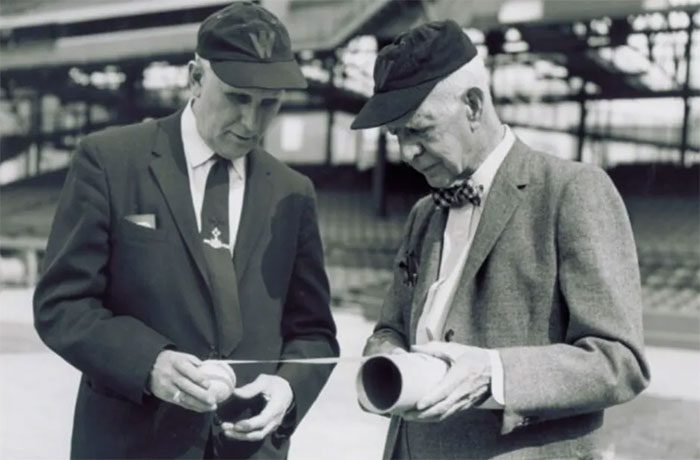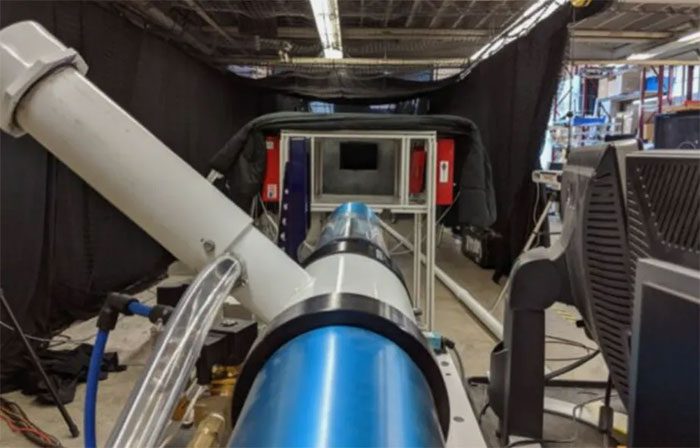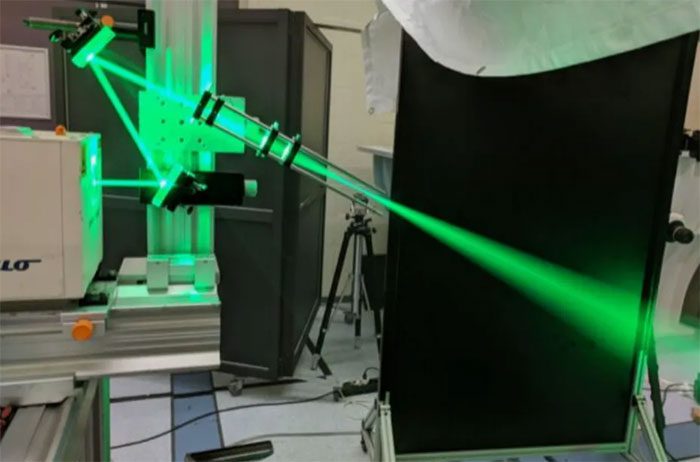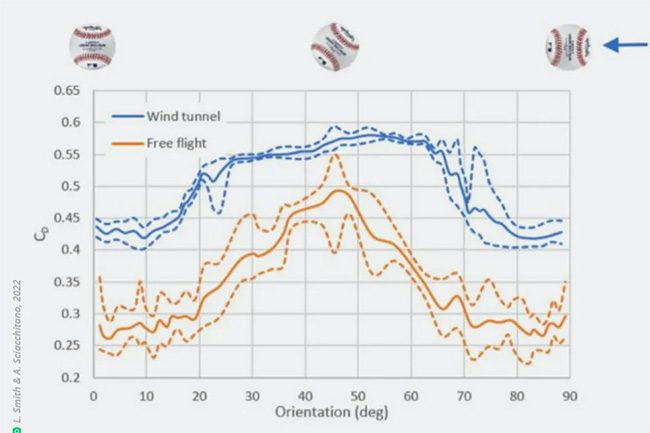Recent laser-based measurement experiments appear to be more practical and accurate compared to traditional wind tunnel drag measurements conducted by scientists.
Baseball has long been a popular research topic among physicists, largely due to the complex aerodynamic properties of a baseball in flight. Traditionally, scientists relied on wind tunnel experiments to measure key characteristics such as speed, spin, lift, and drag. However, this method fails to accurately capture small changes in drag. Even minor changes in drag can have significant impacts—such as a notable increase in home runs.
This is why physicists have developed a laser-guided speed measurement system to measure the speed changes of a baseball as it flies through the air, and then use those measurements to calculate acceleration, various forces acting on the ball, lift, and drag. This new approach was presented in a recently published paper, and they suggested it could also be used for other ball sports such as cricket and soccer.
Any moving ball will leave a trail in the air as it moves, and air drag clearly affects the ball’s speed during flight. The ball’s trajectory is influenced by its diameter and speed, as well as various characteristics of its surface. The surface of a baseball is not completely smooth; it typically has seams in an 8-pattern, and these seams are rough enough to affect the airflow around the baseball when it is thrown. As a baseball moves, it creates a swirling airflow around it, commonly referred to as the Magnus effect. The raised seams disturb the air around the ball, creating high-pressure zones at different positions, which can also cause deviations in its trajectory depending on the type of field.

Lyman Briggs conducted baseball experiments in wind tunnels in the 1940s
Modern baseball physics is said to have begun with the efforts of a physicist named Lyman Briggs in the 1940s. A baseball fan, Briggs was intrigued by the question of whether a ball truly curves. Initially, he enlisted the help of athletes at Griffith Stadium to measure the spin of a thrown ball, aiming to determine if the curve of a baseball depended on its spin and speed.
Briggs conducted wind tunnel experiments at the National Bureau of Standards (now the National Institute of Standards and Technology) to achieve even more precise measurements, as he could control most variables there. He discovered that spin, rather than speed, was the key factor causing a thrown ball to curve; a curved ball could drop by as much as 17.5 inches as it traveled from the pitcher’s position to home plate.
Since then, physicists have eagerly studied various aspects of baseball. For example, in 2006, mathematicians investigated the effect of altitude on the batting average of Major League Baseball (MLB) by constructing a statistical model. They found that the batting average at Coors Field in Denver, Colorado, was approximately 9.2% higher than the average altitude of 5000 to 11,000 feet, and 12.5% higher than at altitudes below 5000 feet. Surprisingly, this stadium is known for being a hitter-friendly park.
In 2018, researchers reported on a study from Utah State University to explain the unexpected change in fastball velocity in experiments using Little League baseballs. USU scientists shot each ball through a smoke-filled chamber. Red sensors detected the balls as they passed through, triggering lasers that acted like flashlights. They then used particle image velocimetry to calculate the airflow at any given point around the ball.

Speed measurement system
The current study is inspired by a recent unusual change in home run percentages in MLB. Home runs are typically tracked by a statistic called HR/BB (home runs per ball hit). According to the authors, from 1960 to 2015, the HR/BB rate generally hovered around 3 to 4%. However, this changed dramatically in the 2015 season when the HR/BB rate rapidly increased, reaching 0.053 in 2017. The fact that MLB actually commissioned an investigative committee highlighted the alarming issue. The committee released its report in 2018, concluding that a slight decrease in aerodynamic drag on the baseball was the “culprit.”
This, in turn, has led researchers to focus more in recent years on developing better methods for measuring the drag of a baseball in its flight path. The drag coefficient describes how much air flows “sticky” against the surface of the ball, where the faster the ball moves, the less “sticky” it becomes. Typically, the ball experiences significant turbulence and higher drag at slower speeds. If the ball reaches a critical speed threshold, it undergoes what is called “drag crisis.” The airflow turbulence suddenly decreases, and drag sharply drops when the airflow transitions from laminar to turbulent.
These types of experiments are usually conducted in wind tunnels. However, this method has certain limitations in accurately measuring drag. “You have to hold the ball in some way, and that means there are always some imperfections when using a wind tunnel to measure drag,” the researchers noted.

This is because the supports used to hold the ball stationary, measuring aerodynamic forces, can alter the airflow and the related aerodynamics. Scientists have attempted to address this issue by anchoring supports from below, minimizing disruptive effects. However, drag is also affected by the ball’s orientation. Wind tunnel experiments to study the ball’s orientation require the ball to be supported on its axis of rotation, close to the point of trajectory separation. The authors wrote: “It is unclear how these attachments affect the positioning of trajectory separation measurements and drag.”
Smith and his co-author, Andrea Sciacchitano from Delft University of Technology in the Netherlands, set out to find a better method for measuring the drag of a baseball in its free flight path. They noted that the first measurements were conducted at the 1996 Olympics, using two 120fps cameras to track the balls. In 2006, MLB installed a video-based baseball tracking system in every MLB park. “These systems are primarily aimed at tracking pitch speed, pitch movement, and strike zone position, but drag can also be extracted from publicly available relevant parameters,” the study authors added that such measurements can be noisy and influenced by the environment of the ballpark.
All the baseballs used in their experiments came from the same manufacturer that supplies balls to MLB: Rawlings Sporting Goods. Each ball has a rubber core wrapped in three layers of wool, all encased in leather, with hand-stitched seams. The material properties are carefully controlled to ensure consistency in weight, size, hardness, elasticity, and even the color of the rubber. Many people, including experts, say they find it very difficult to distinguish between the belly leather and the back leather on a ball, but they are actually two different types of leather.

Comparison chart of MLB drag coefficients for non-spinning balls.
The researchers used a pitching machine to launch baseballs, placing two speed sensors to track the ball as it passed between light screens spaced about 0.4 meters apart. They used a cradle attached to the end of the air piston of the pitching machine to impart spin to the balls. The spin rate increased with the length of the platform, and they could control that speed by adjusting the ball’s position in the holder before launching. They measured the ball’s orientation by tracking three markers placed on each ball. The entire trajectory of the ball was recorded using high-speed video. These experiments were conducted at Washington State University.
After that, Sciacchitano conducted particle image velocity measurements in the Aerodynamics Laboratory at TU Delft. The air in the laboratory was infused with micrometer-sized glycol water particles, illuminated by a laser. Baseballs were thrown without any spin, and their trajectories were recorded using high-speed video. This allowed the research team to visualize the disturbances in the air around the non-spinning baseballs as they flew freely.
The method developed by Smith and Sciacchitano produced drag force values that aligned well with radar and video measurements but were significantly lower than those reported from other wind tunnel tests. They concluded that free-flight experiments provide a more realistic reproduction of the flow physics around a moving baseball, suggesting their use to complement future wind tunnel experiments.
Smith stated, “We had to go back and look at what we could do to make this more accurate, and we did. It was not simple to implement, and we spent a lot of time calibrating every day just to ensure that the sensors were telling us what we thought they were, but we believe that the drag force measurements are being made and are happening to be able to signal if there are changes. Very small differences can make a big difference.”





















































